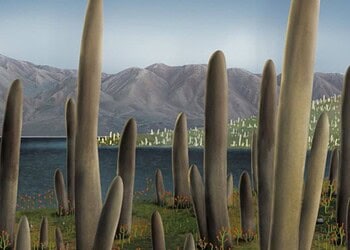They call it “Tree 76”, because it stands 76 meters tall (249 feet) above the Muir Woods floor in California. Researchers wanted to see how old Tree 76 is, and they were surprised to see how young it is – at only 777 years old, it’s much younger than the oldest known trees of its kind.

“Tree 76 is one of the larger trees that you can walk near so I think people have been guessing about its age for a long time,” Save the Redwoods League Science Director Emily Burns said. “We know Redwoods can live quite a long time. The oldest one that we know of is 2,500 years old.”
Indeed, trees can get incredibly old. Unrelated to this study, Rachel Sussman is documenting the oldest living things in the world – she found 10,500 year old pines and a 9,550 year old spruce, and there’s also giant sequoias like General Sherman, which can go over 2,000 years old. It was somehow expected that Tree 76 was about the same age, revolving around 1,200 – 1,500 years. But biologists from Humboldt State University showed that age and size don’t necessarily correlate, and the tree was born only in the 13th century – still a very old tree, just not as old as they were expecting. Other, smaller trees from the same species are much older.
“Age and size don’t correlate well,” Burns said, adding that this is the first time the age of 76 age has been determined by scientists.
But even so, Tree 76 was 150 years old when Columbus reached the Americas, and it was alive for half a millennium when the industrial revolution started. It kind of gives you a new sense of scale, doesn’t it?
The tree belongs to a species called Sequoiadendron giganteum, also known as Sierra redwoods; it is the sole living species in the genus Sequoiadendron, and one of three species of coniferous trees known as redwoods. Giant sequoias are the world’s largest single trees and largest living thing by volume (read: The Largest Organism in the World / The Heaviest Organism in the World). Despite being adapted to forest fires and rough conditions, it is very difficult for Sierra redwoods to reproduce, due to the seeds only being able to grow successfully in full sun and in mineral-rich soils, free from competing vegetation.
Biologists nowadays don’t need to cut a tree to know how old it is – they can simply take a core from it. Now, they plan to find clues about medieval climate based on the tree’s rings.






